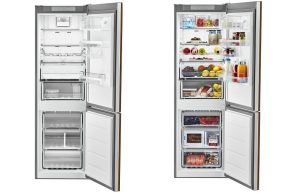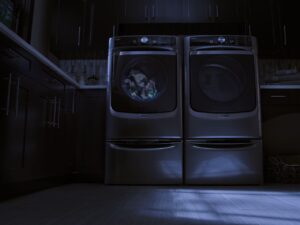How To Fit Everything into a Small Fridge

Whether your household has recently increased or you have guests over, it can sometimes be a challenge to fit everything you need into a refrigerator that is just a bit too small. Of course, the ideal scenario would be to upgrade your refrigerator, but you may not have the kitchen space or funds to do this right now. So, here we will delve into some great hacks to help you to fit everything into your small fridge.
Assess Whether it Needs to be in the Fridge?
First things first. You need to assess whether you have items in your refrigerator that don’t actually need to be there. There are actually lots of things that you may automatically put in your fridge that can either survive at room temperature or even last longer when they are not kept in the cool temperatures inside your appliance.
Some common examples include:
- Potatoes and Onions: Providing your potatoes and onions are kept in a cool, dry environment, they will last far longer than if they were in the refrigerator. In fact, refrigerator conditions can make these items more prone to rot.
- Bread: Bread can stay fresh in a sealed plastic bag at room temperature. When your bread is in the fridge, it can actually go stale faster as the conditions dry it out faster.
- Tomatoes: Tomatoes can be sensitive to strong flavors, so they may be better kept in a bowl on your counter.
- Squash: Most types of squash, particularly those with a thicker skin can last months in a pantry.
- Uncut melons: Like squash, these will do best in a pantry or on a countertop. Just remember to put them in the fridge once you do cut into them.
- Peanut butter: Unless it is organic, you can keep peanut butter in your cabinet for months.
- Rice and Beans: Unless cooked, these items can be stored in airtight containers. In fact, white rice can last up to 10 years in canisters in your pantry.
Label:
While this may seem tedious, labeling will help you to designate a specific home for each type of item. This will not only help to keep things organized, but can help you to avoid items getting forgotten and spoiling.
Use Bins with Handles:
Containers with handles can make it easy to pull out the bins to access the very back of the refrigerator. It also makes it easier to view everything, so items don’t get pushed to the back, where you can’t see them.
Add Extra Shelves:
If you have some taller items that seem to be taking up space, lay them down. This will allow you to add extra shelves. Remember that while the door pockets are not the best place for milk and other temperature sensitive items, there is no reason why you can’t keep soda, condiments, and other bottles in the door.
Use 6 Pack Containers:
If you often buy items that come in a cardboard six pack container, don’t automatically throw them in the trash. These containers can be a great way to stack items inside your refrigerator without squishing anything. These containers are designed to protect the items during transit, so you can work vertically inside your refrigerator.
Don’t Overpack:
While it may be tempting to use every available inch of space, bear in mind that refrigerators do need space for air to circulate. If you pack your fridge, you may encourage items to spoil. So, try to rotate items. Only putting open containers in the refrigerator and leaving spare, sealed items in the pantry when suitable.
If your small refrigerator is struggling to meet the demands of your family, it may be time for an upgrade. You can explore your options with our online refrigerator collection. Alternatively, you can speak to one of our home appliance experts for further help and guidance.
- Choosing Between a Plastic and a Stainless Steel Dishwasher Tub
- Steam Dryers: Efficient, Gentle, and Wrinkle-Free Laundry Solution
- Benefits of a Smart Washing Machine
- Beverage Stations: Elevating Your Kitchen with the Latest Trend
- New Ways to Design Your Kitchen in 2024
- Should You Choose a Column Refrigerator?
- The Benefits of an Outdoor Pizza Oven
- Should You Choose a Freestanding or Slide-In Range?
- Understanding Microwave Wattage
- Standard or Pro Ranges: Which One is Best for Your Home?






